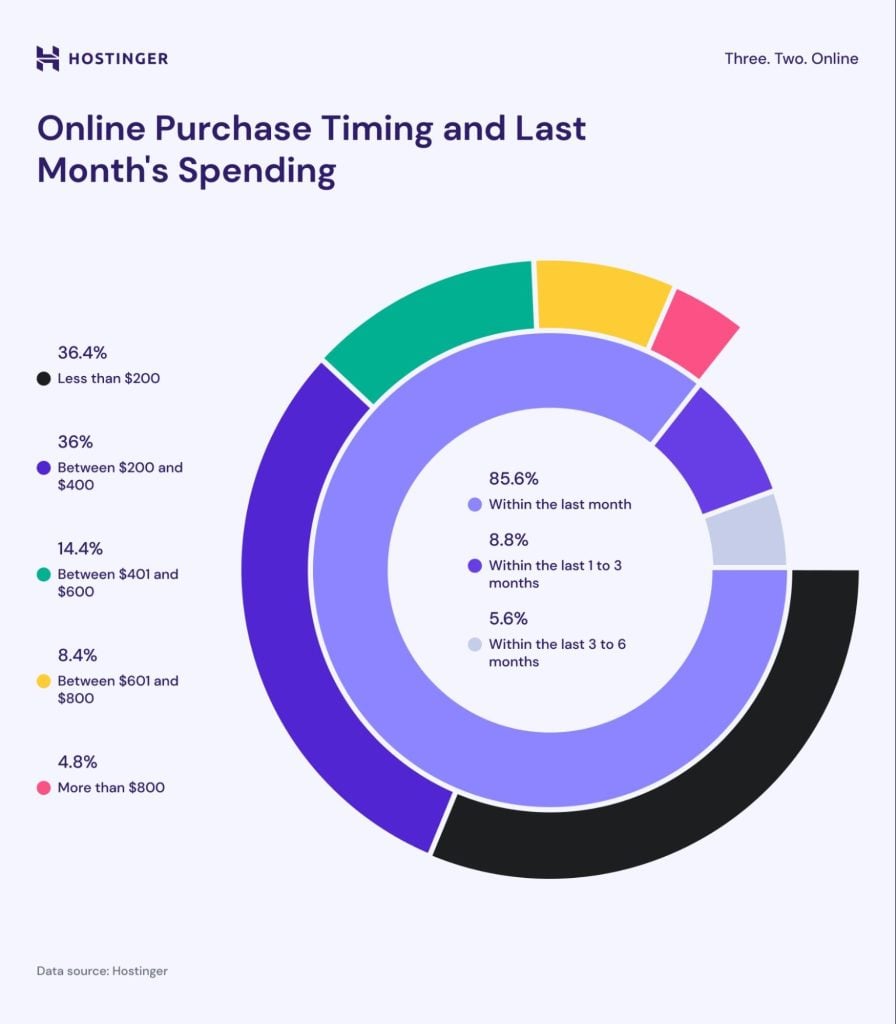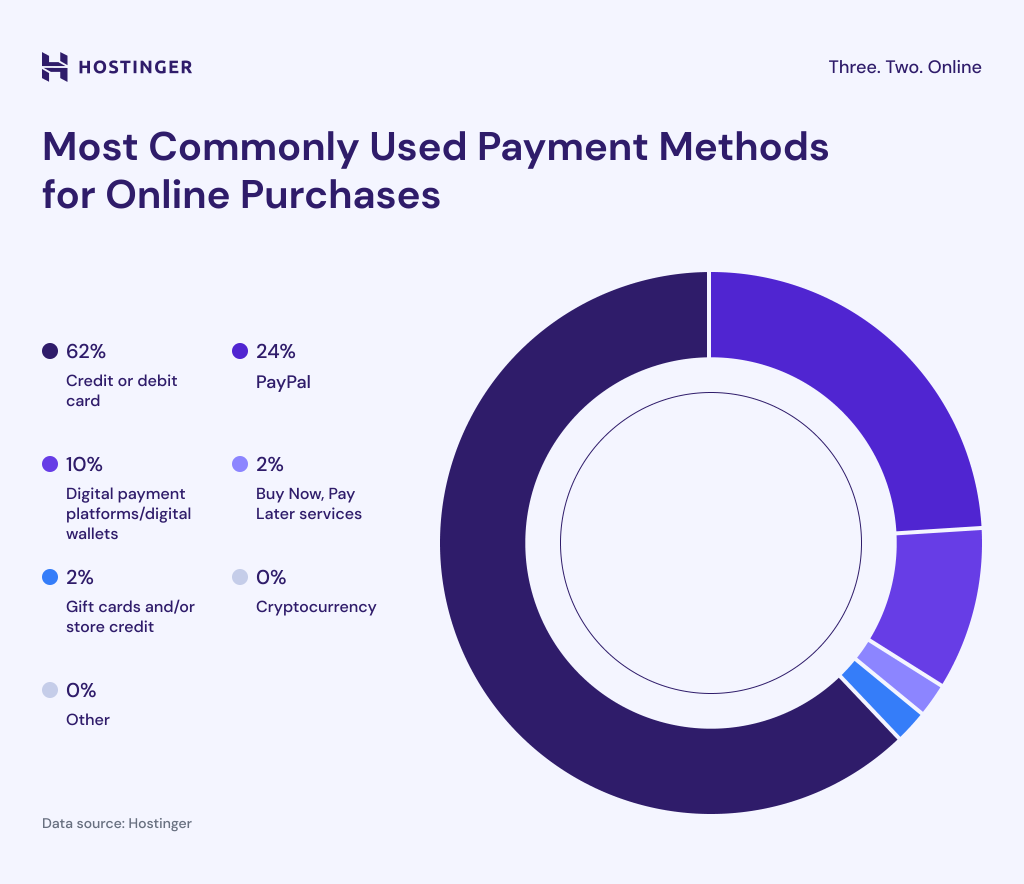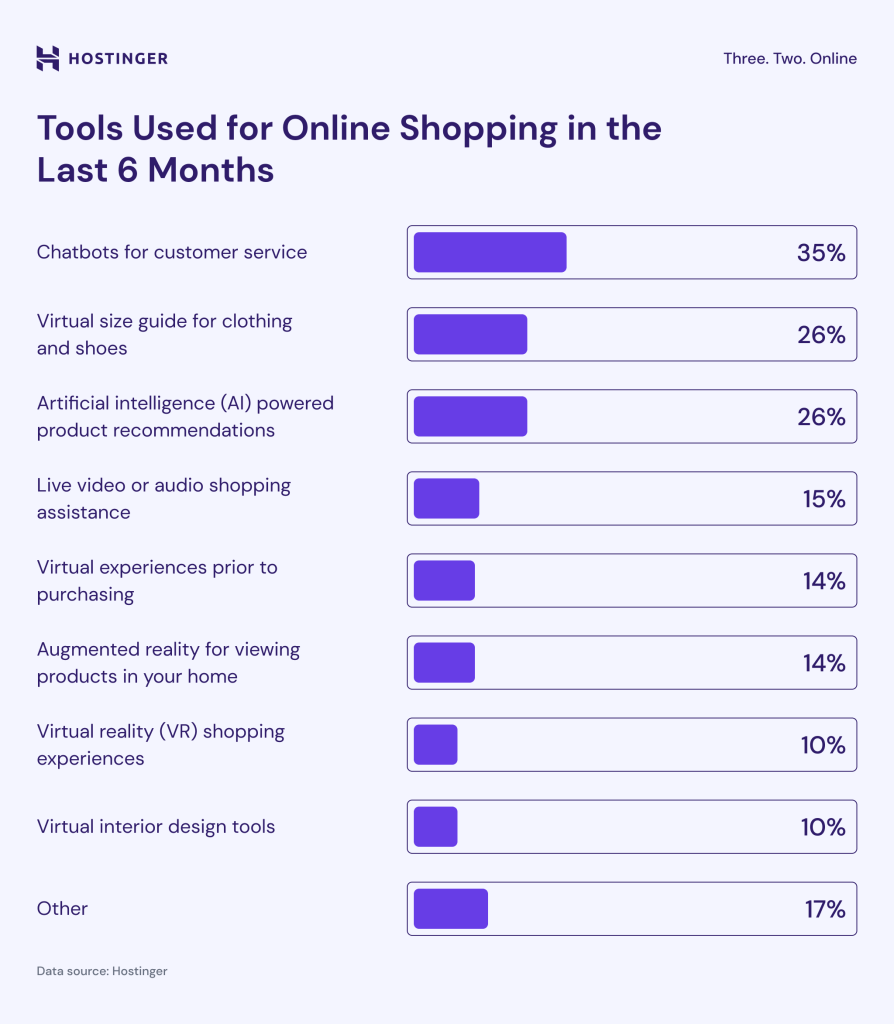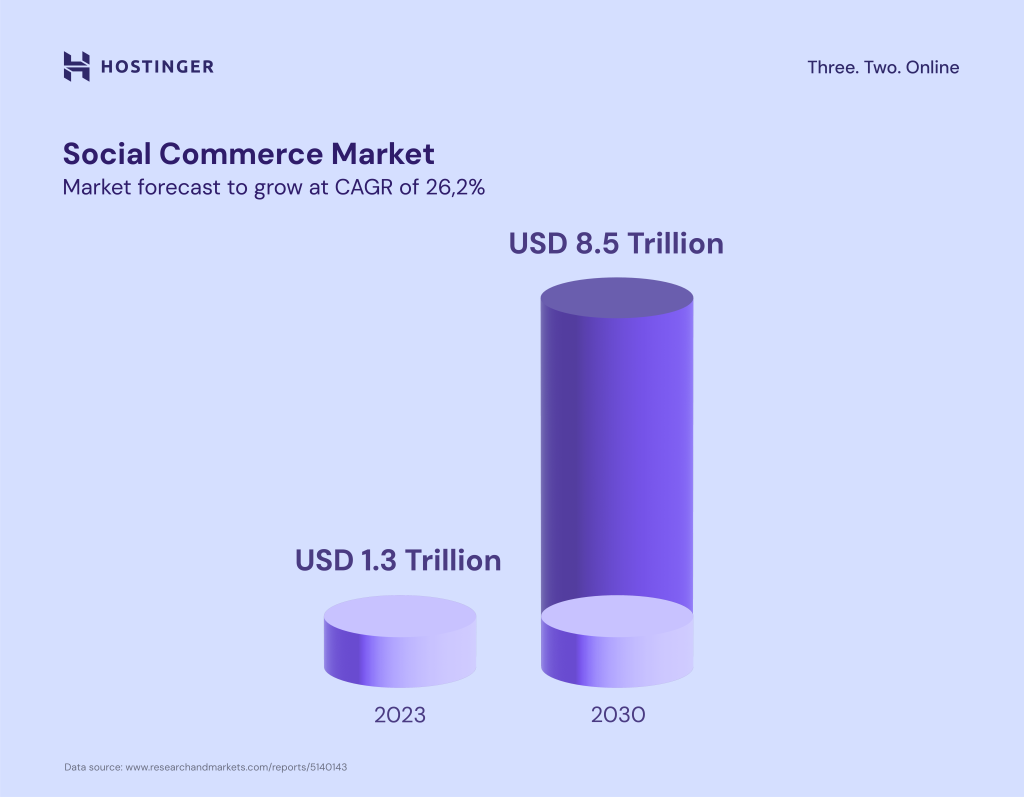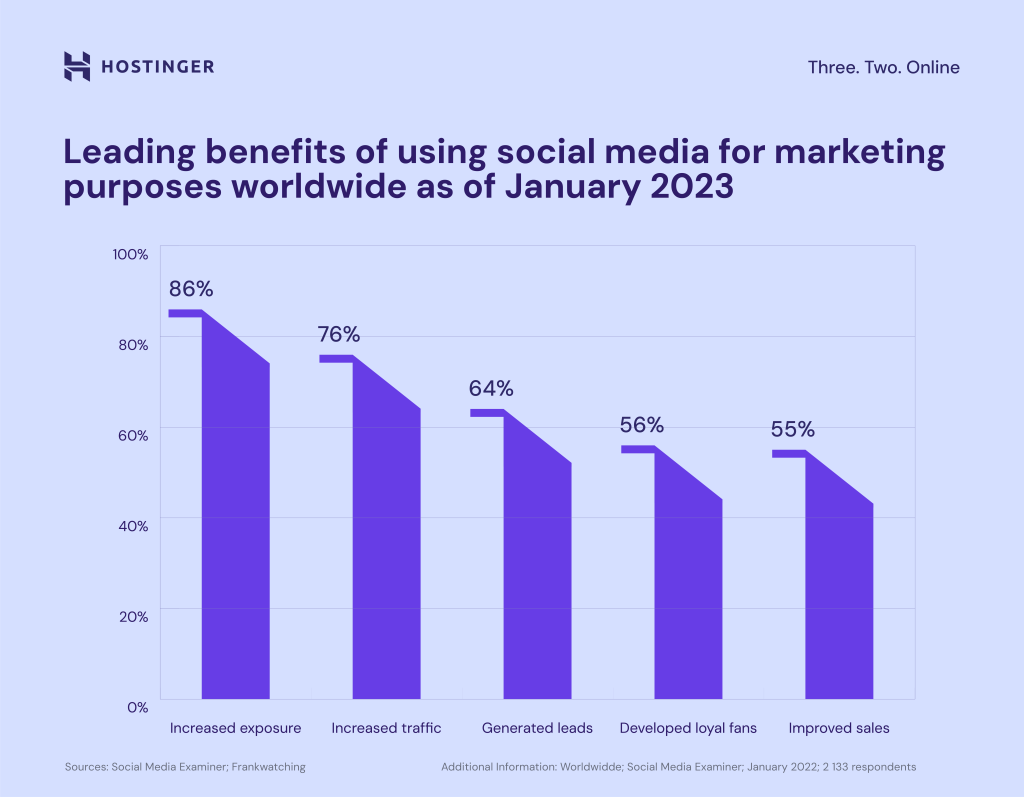Social Commerce 2025: Definition, Key Trends, and Statistics
Social commerce – the use of social media for shopping – has revolutionized how consumers discover and buy products online. As this trend continues to grow, businesses must adapt to stay competitive.
In this article, we will explain what social commerce is, its key trends, and the top statistics for 2025. With industry data and exclusive findings from our latest survey, we’ll reveal how today’s shoppers use social platforms and how your own brand can leverage them to drive sales.
What is social commerce?
Social commerce involves promoting and selling products directly to social media users without them having to leave the website or app.
This differs from traditional eCommerce, where transactions occur on a dedicated online store or marketplace website. With social commerce, product discovery, brand-to-customer interaction, and transactions happen all in one place.
According to our data, 82% of consumers use social media for product research, with 55% of Gen Z favoring TikTok and 52% of Millennials preferring Facebook.
No doubt, social commerce will continue to shape the future of online shopping. It aligns with broader eCommerce trends emphasizing convenience, engagement, and personalized experiences.
2025 Social commerce statistics: Key findings
These statistics – a combination of industry data and our own survey results – offer a snapshot of social commerce trends in 2025. Here are the key insights:
- About 86% of people made an online purchase within the last month.
- Most consumers (82%) use social media for product discovery and research.
- YouTube is the go-to platform for product discovery among 70% of Gen Z.
- Facebook dominates social commerce, except among Gen Z.
- Credit and debit cards are the preferred payment method for 62% of consumers.
1. About 86% of people made an online purchase within the last month
According to the latest eCommerce statistics, 85.6% of respondents reported making an online purchase within the last month. Most respondents (36.4%) spent less than $200 on their most recent online purchases.
Meanwhile, 36% spent between $200 and $400, followed by 14.4% who spent between $401 and $600. A smaller portion, 8.4%, reported spending between $601 and $800, and only 4.8% spent more than $800 on their last online purchase.
2. The majority of consumers (82%) use social media for product discovery and research
According to our survey, 82% of consumers use social media platforms to discover and research products.
YouTube leads the way, with 52% of respondents using it for product research, followed closely by Facebook at 45%. Instagram and TikTok are also popular platforms, with 38% and 34% of consumers using them for the same purpose, respectively.
Other platforms like Pinterest (26%) and X (Twitter) (17%) follow, with more niche networks such as Reddit, Snapchat, and LinkedIn rounding out the list.
3. YouTube is the go-to platform for product discovery among Gen Z and Millennials
YouTube continues to dominate as the top platform for product discovery among Gen Z (70%) and Millennial respondents (63%).
A large chunk of Gen Z also favor Instagram (60%) and TikTok (55%). Facebook (30%) is less popular with this generation.
Although Millennials also use Instagram (53%) and TikTok (47%) to discover products, 52% of them slightly prefer Facebook – a clear difference from Gen Z.
4. Unlike Gen Z, most Millennials purchase on Facebook
Facebook and TikTok are the most popular platforms among Milennials and Gen Z for shopping. Facebook is the most widely used among Millennials (53%), while TikTok Shop takes the lead for Gen Z with 40%.
As for other platforms, 34% of Millennials shop on Instagram, while only 20% of Gen Z do the same. Gen Z is more inclined to use Pinterest for shopping (25%) compared to 19% of Millennials.
5. Credit/debit cards are the preferred payment method for 62% of consumers
According to our study, 62% of consumers prefer credit or debit cards for their online purchases.
PayPal is the second most popular option that is used by 24% of respondents. Other digital payment platforms, such as Google Pay or Apple Pay, are used by 10% of consumers, while 4% reported using other payment methods.
This preference for credit and debit cards is consistent across various household income levels. So, despite the increasing popularity of alternatives like digital wallets and buy now pay later services, traditional payment methods still reign supreme.
6. Fast, reliable shipping tops priority for 58% of shoppers
Our data shows that 58% of consumers consider fast and reliable shipping the most important factor when shopping online.
Secure payment options follow closely behind, valued by 48% of respondents. 46.8% prioritize competitive pricing and discounts, followed by detailed and accurate product descriptions with 36.4%.
Other factors that consumers care about are ease of returns and refunds (24.8%), the availability of customer reviews (22%), and user-friendly website navigation (20.4%).
Interestingly, despite the widespread use of smartphones, mobile experience (14.8%) and personalized recommendations (10.4%) are lower priority.
7. 35% of customers use chatbot support when shopping online
In the last six months, 35% of consumers reported using chatbots when shopping online, making them the most commonly used customer support tool.
Other tools, such as virtual size guides (26%) and AI-powered product recommendations (26%), are also popular.
While newer technologies like live video or audio shopping assistance (15%), virtual experiences (14%), and augmented reality for viewing products in the home (14%) are gaining traction, they are still less popular compared to chatbots.
The rise of social commerce
With social networks, businesses are getting new opportunities to interact with customers. In this section, we will look at the fast growth of social commerce.
8. Social commerce penetration rate projected to reach 25% in 2024
Social commerce is set to reach a 25% penetration rate in 2024, meaning one in four potential customers use social media to shop.
In 2023, social commerce generated $571 billion. With an expected annual growth rate of 13.7%, it’s projected to exceed one trillion dollars by 2028.
If you’re yet to promote and sell your products on social media, it’s high time to take advantage of social commerce to connect with customers and boost sales.
9. The global social commerce market is forecasted to reach $8.5 trillion by 2030
In 2023, the global social commerce market was already valued at $1.3 trillion. With an impressive compound annual growth rate (CAGR) of 26.2% from 2023 to 2030, it is expected to soar even higher and reach $8.5 trillion by 2030.
10. Millennials to represent 33% of social commerce spending
By 2025, Millennials are expected to account for 33% of global social commerce spending, making them the largest demographic in this market. They are followed closely by Gen Z shoppers, who are projected to account for 29%.
Clearly, the tech-savvy younger generations are comfortable with purchasing products through social media platforms.
11. U.S. social commerce expected to surpass $90 billion in 2025
In 2023, social commerce sales in the United States nearly reached $64.8 billion. The market is expected to exceed $90 billion in sales in 2025 and close to $150 billion by 2028.
The U.S. is a leader in social commerce adoption. For global businesses looking to expand, it’s a fertile ground for selling products through social media.
12. 60% of U.S. shoppers purchased after discovering a product on social media
Approximately 58% of shoppers in the U.S. reported purchasing a product after seeing it on a social media platform. 44% of respondents in the United Kingdom and 40% in Germany reported the same.
This highlights the immense potential for businesses to leverage social media in different countries.
Advantages of social commerce
Enriched engagement, direct customer interaction, personalized experiences, and ease of purchase are just a few advantages that make social commerce so vital for your eCommerce strategy. Let’s explore more of them in detail.
13. One-third of Gen Z and Millennials completely trust influencer product and brand recommendations
In 2023, Gen Z and Millennials had the highest levels of trust in product and brand recommendations from social media influencers. One-third of each group even expressed complete trust in them.
In contrast, over 40% of baby boomers reported no trust at all in influencer recommendations. They were even more skeptical of them than Gen X (22%) and Gen Z (10%).
60% of Gen Z found new products or brands on social media. Compared to the overall consumer base, Gen Z consumers were almost twice as likely to discover and purchase a product through an influencer.
Expert tip
People can see through the fake, the filtered, the overly posed and produced. So consumers are turning to a new kind of influencer: creators. They feel like a trusted friend, a peer, a “normal” person who just happens to share their life on the internet. This authenticity makes them more trusted by Gen Z and Millennials, resulting in huge opportunities for brands to drive product discovery and purchase.
This statistic highlights a huge opportunity for businesses to leverage influencer marketing and social recommendations to build trust and drive sales among younger demographics.
14. Reach up to 62.6% of the global population
There are over five billion social media users worldwide, which is 62.6% of the global population. Northern and Western Europe had the highest social network penetration rates, at 80.2% and 78.2%, respectively.
With social commerce, businesses can tap into this global market, expanding their reach and attracting more clients.
15. Marketers report an 86% increase in brand exposure when using social media
In 2023, 86% of marketers reported that the most common advantage of social media marketing is increased exposure. Increased traffic (76%), lead generation (64%), developing loyal fans (56%), and improved sales (55%) follow.
Unlike traditional marketing methods, social commerce offers businesses the ability to promote their products more directly and consistently. This leads to better exposure, engagement, and in turn, higher conversion rates.
16. Testimonials are trusted by 72% of consumers
To build brand trust, it’s very important for businesses to offer quality products and receive positive reviews. Especially when 72% of consumers trust other people’s testimonials.
Social media offers an environment for customer reviews to flourish organically. By encouraging them and other user-generated content, businesses can boost consumer confidence and strengthen their brand’s reputation.
Strategies for success in social commerce
57% of global internet users learn about new brands and products through social media. That’s why knowing how to leverage social media advertising, influencer marketing, and user-generated content is essential for success.
Let’s take a look at key statistics about these social commerce strategies.
17. Influencer market to be worth $24 billion in 2024
The global influencer market has tripled in value since 2019. According to the latest digital marketing statistics, this industry is estimated to reach a record value of $24 billion in 2024. This growth highlights the increasing impact of influencers in marketing.
Partnering with the right influencers can help businesses reach a highly engaged, loyal audience, leading to increased brand awareness and sales.
18. Instagram influencer marketing industry to be valued at $22.2 billion by 2025
Influencer marketing on Instagram is growing rapidly, with the global market expected to increase from $13.8 billion in 2021 to $22.2 billion by 2025. Even back in 2021, the platform saw nearly four million brand-sponsored influencer posts.
19. Deals and discounts motivate 39% of shoppers to purchase through social media
In 2023, deals and discounts were the primary factors motivating 39% of online shoppers globally to buy products directly on a social media platform. Ease of purchase (33%) and exclusive offers (28%) were also significant drivers.
Offer exclusive discounts and promotions that can only be redeemed on a specific social media platform to incentivize your customers.
20. When making decisions, user-generated content is trusted by 21% of consumers
In 2023, 21% of consumers worldwide were influenced by high-quality reviews when deciding to purchase, making it the most impactful form of user-generated content. Meanwhile, only 4% of consumers found shopper videos compelling.
Encourage high-quality reviews and testimonials and leverage the power of social proof to build trust with potential customers.
21. Mobile ads spending increasing to $212 billion by 2028
By 2028, social media advertising spending is expected to skyrocket to $255.77 billion, with mobile ads alone accounting for $212.68 billion. This substantial growth shows just how important mobile ads are for creating personalized experiences and reaching potential customers.
As mobile commerce continues to dominate, 70% of consumers report using their phones to make online purchases, while only 23% use their computers. Clearly, optimizing social media advertisements for mobile should be every business’s top priority.
With social media advertising, businesses can target specific demographics, ensuring their message reaches the most relevant audience. These targeted ads will surely help the campaign’s effectiveness and increase return on investment (ROI).
Future outlook of social commerce
The future of social commerce is shaping up to be dynamic and exciting. In this section, we will explore future trends, evolving consumer behavior, technological innovations, and potential market expansion of social commerce. Let’s see what we can expect in the coming years.
22. Purchases via chatbots to reach $142 billion by 2024
It’s predicted that retail spending via chatbots will reach $142 billion by 2024.
By implementing AI-powered eCommerce tools like chatbots, businesses can provide 24/7 customer support, answer product-related questions instantly, and personalize recommendations based on each user’s preferences.
For example, Hostinger’s chatbot assistant, Kodee, is available 24/7 to help users navigate the most common issues when building and managing websites.
Nowadays, most social commerce platforms support chatbots. So, it’s the perfect time to take advantage of this technology to increase customer satisfaction and overall sales.
Expert tip
Kodee, Hostinger’s AI-powered assistant, has transformed how our users engage with our platform, offering instant, round-the-clock support that feels personal and relevant. By understanding user preferences and common challenges, Kodee can guide users swiftly, ensuring they get timely help on everything from product questions to technical support. This seamless experience not only boosts customer satisfaction but also builds trust and encourages user confidence, both crucial for driving conversions in today’s social commerce landscape.
23. Live shopping to surpass $256 billion by 2032
In 2022, Facebook was the leading platform for live commerce, with 57.8% of global internet users making purchases during live shopping events. Instagram was the second most used at 45.8%, followed by TikTok (15.8%) and YouTube (14.4%).
The global live-streaming market is expected to grow significantly, from $38.87 billion in 2022 to $256.56 billion by 2032, driven by the increasing demand for video content.
With live commerce, businesses can showcase products in real time and interact with customers directly. Many customers respond well to this interactive format, which encourages purchases and fosters brand loyalty.
24. AI integrations are expected to drive nearly 80% of eCommerce sales by 2025
According to the latest AI statistics, the global AI market is expected to be worth $305.9 billion by the end of 2024. At this rate, it shows no signs of slowing down.
The integration of AI in social commerce is projected to bring in 79.6% of retail eCommerce sales in the US by 2025.
By leveraging AI, businesses can personalize product recommendations, target the right audience with social media ads, and streamline their social commerce strategy for maximum impact.
25. Micro-influencer recommendations are already followed by 82% of consumers
82% of consumers are highly likely to follow a recommendation from a micro-influencer.
Micro-influencers tend to have more engaged and loyal followers, making them powerful allies for brands. Partnering with micro-influencers helps businesses reach a targeted audience with a high level of trust.
26. Social media shopping is preferred by 53% of users, and expected to grow
53% of global users purchase directly through social media platforms like Facebook, Instagram, and TikTok. This seamless integration enhances the customer journey and lets brands capitalize on the growing trend of social shopping.
Social commerce offers customers a convenient and streamlined shopping experience. By integrating social commerce into their overall eCommerce strategy, businesses can meet customer demand for social shopping and drive sales directly within the social media platform.
The four most popular social commerce platforms
Social media platforms are some of the most visited websites in the world. So, it’s no surprise that they are powerful tools for businesses looking to get discovered and increase sales.
In fact, in 2023 alone, roughly two-thirds (65%) of Millennials purchased goods from the social media accounts of brands they follow.
In comparison, about 60% of Gen Z users followed and bought from brands, while approximately 52% did so from influencers.
Gen X users have a strong preference for retailers, with 61% following and purchasing directly from their social media accounts. Meanwhile, only 11% of Baby Boomers followed and purchased from influencers.
As seen in the chart below, Facebook leads the way, with 46% of our respondents using it to make purchases. It’s followed by TikTok at 26%, Instagram at 21%, and Pinterest at 16%.
In this section, let’s see how these social commerce platforms are shaping the future of eCommerce.
1. Facebook
Facebook is the leading platform for social commerce. 46% of online shoppers name it their preferred social network for making purchases.
Its global reach and over three billion monthly active users give businesses unparalleled access to potential customers. It’s also recognized for offering the best social commerce experience, with 23% of global consumers rating it the highest.
It’s safe to say that Meta dominates social commerce with its four integrated platforms: Facebook, Messenger, WhatsApp, and Instagram. Establishing your business presence on Facebook will make it easier to expand to the rest of Meta’s platforms.
2. TikTok
TikTok has rapidly emerged as a powerful player in social commerce, with 26% of users using the platform to discover and research products.
Among Gen Z, TikTok ranks third in preference for product discovery (55%), while 47% of Millennials place it fourth on their ranking of shopping platforms. Meanwhile, 40% of Gen Z consumers have bought products from TikTok Shop, compared to 35% of Millennials.
Its ability to engage users with short, captivating videos contributes to its success in sparking impulse purchases. And with TikTok Shop, users can easily act on that impulse without leaving the app.
So, consider tapping into TikTok for an opportunity to reach a highly engaged, impulse-driven audience.
3. Instagram
Instagram is one of the most influential social commerce platforms. 53% of Millennials and 60% of Gen Z shoppers use Instagram to discover and purchase products. According to our survey, 21% of respondents had bought products on it in the last six months.
As a visual platform, Instagram excels in showcasing products through photos and videos. Features like Instagram Stories and Shopping also let users interact with brands directly.
Instagram continues to be a preferred platform for younger generations, while platforms like Facebook and YouTube see more engagement from older demographics.
Businesses looking to tap into the Gen Z and Millennial markets should focus on optimizing their presence on Instagram.
4. Pinterest
Pinterest plays a unique role in social commerce. Its users mainly use the platform to create boards, save ideas, and explore new trends. This makes Pinterest a popular platform for discovery, with 16% of shoppers using it to find new products.
Unlike many other social platforms, 96% of the top searches on Pinterest are unbranded, showing users’ openness to new ideas and brands. This makes Pinterest valuable for businesses looking to engage with consumers early on, even before they have a specific brand in mind.
Social commerce strategies to boost engagement and sales
Now that you’ve gained the latest insights into social commerce, you might wonder how you can put them into practice. Here are some of the ways you can make the most out of social media to improve customer engagement, simplify the shopping process, and drive sales.
1. Turn social posts into instant shopping opportunities
Shoppable posts allow customers to browse and purchase products directly from social media platforms without leaving the app. By reducing friction in the buying process, customers are more likely to convert.
By keeping the entire shopping process on one platform, businesses lower the chances of abandoned carts. Since customers don’t need to leave the app to complete their purchase, the buying process becomes smoother, increasing the likelihood of completing the checkout.
2. Utilize user-generated content (UGC) for social proof
User-generated content, such as reviews, photos, and videos, showcases authentic customer experiences that help build trust and credibility. People are more likely to make a purchase when they see a product being used and loved by their peers.
Encouraging customers to share their experiences with the product can be an organic, cost-efficient way to promote your brand.
Expert tip
“Shoppable video has core to the customer journey, driving an increase in DTC conversion rates of 5-20% by seamlessly bringing visual social proof to the point of sale,” says Janvi Shah, Cofounder & CEO, Hue. “Through an A/B test with one of our enterprise brand partners, we saw a 5.3% lift in conversion after adding Hue shoppable video alone. This boost is driven by customers’ desire for trustworthy social proof and the ability to see real people like themselves engaging with the product, creating a sense of authenticity that turns engagement into sales.”
3. Elevate the customer experience with responsive interactions
When customers ask questions and raise their concerns on social media, respond to them quickly and thoughtfully so that they know they are valued. By listening to customers on social media, businesses can also get feedback to improve their products.
Remember: a good customer experience helps create a positive brand image that fosters loyalty and encourages repeat purchases.
4. Boost sales with targeted social media advertising
On social media, businesses can run highly targeted ad campaigns with tailored messaging to reach users with specific demographics, interests, and behaviors. This can lead to higher click-through rates, ROI, and overall conversions.
With ad analytics, businesses can rework their campaigns and improve them over time.
Sources
The statistics and other general information were obtained from our own survey and various resources, including:
- Accenture
- eMarketer
- Facebook Business
- Forbes
- Influencer Marketing Hub
- Instagram Business
- McKinsey
- OptinMonster
- Pinterest Business
- SimplicityDX
- Sprout Social
- Statista
- TikTok Shop
- Tidio
Main takeaways
Social commerce taps into the power of social media for business, creating an engaging and convenient experience for customers.
As highlighted by our survey, 82% of consumers use social media for product discovery, and 86% have made an online purchase in the last month.
With an expected annual growth rate of 13.7%, social commerce is projected to exceed one trillion dollars by 2028. Platforms like Facebook, Instagram, YouTube, TikTok, and Pinterest continue to play significant roles in shaping this rapidly evolving landscape.
For any business looking to connect with a global audience, cultivate brand loyalty, and achieve sustainable growth, it’s more important than ever to implement social commerce strategies.
Methodology
The data in this article comes from a combination of external sources and a survey conducted by Datalily for Hostinger in August 2024. The survey gathered insights from 250 US consumers, focusing on their social commerce habits, preferences, and experiences. Additional research from trusted industry sources was also incorporated to provide a comprehensive overview of the social commerce landscape.
Social commerce FAQ
How does social commerce differ from eCommerce?
Social commerce is the use of social media to promote and sell products so users can shop without having to leave the app. In contrast, eCommerce typically refers to standalone sites where transactions occur independently of social media. If you’re looking to create your own online store, we recommend using an eCommerce website builder to design your site.
How does social commerce work?
With social commerce, brands showcase products, engage with customers, and encourage purchases from within social media apps. Features like shoppable posts, live shopping, and targeted ads streamline the buying process.
What are some examples that define social commerce?
Instagram Shopping, Facebook Marketplace, and TikTok are some of the most popular examples. They have features that allow users to discover and purchase products directly on their platform.
What social commerce platform is most popular?
Facebook is the most popular social commerce platform, with 46% of shoppers naming it their preferred social media for buying products.
What makes social commerce powerful?
It leverages user-generated content, influencer partnerships, and real-time engagement on social media platforms to create an interactive and convenient shopping experience that drives higher conversion rates.
